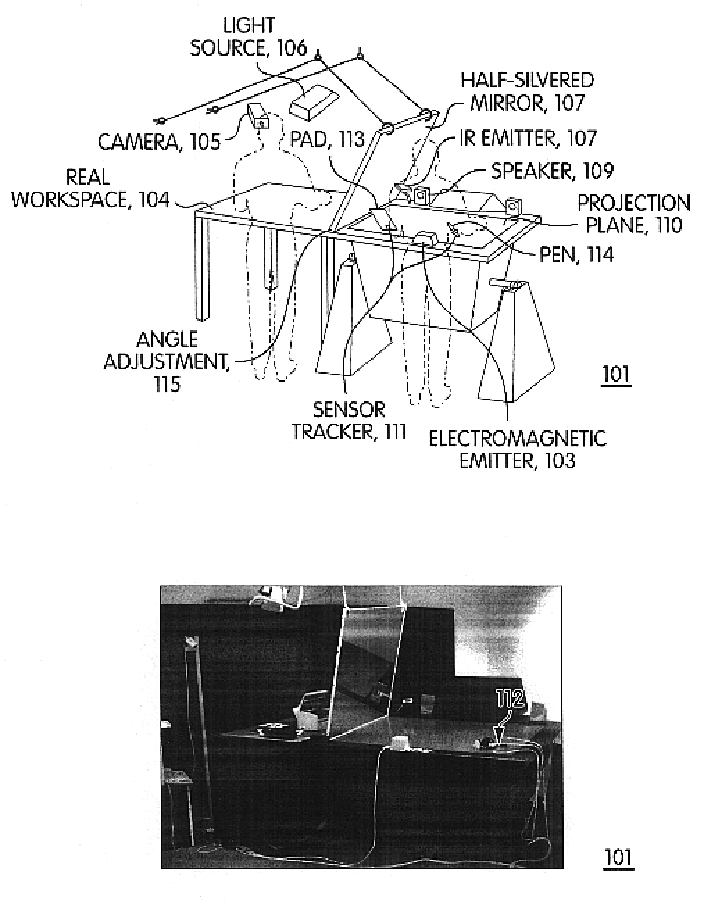Extended virtual table: an optical extension for table-like projection systems
a projection system and virtual table technology, applied in image data processing, programme control, instruments, etc., can solve the problems of limited application, visual undistorted direct interaction with the virtual scene, and occlusion caused by the user's hand or hand-held input device,
- Summary
- Abstract
- Description
- Claims
- Application Information
AI Technical Summary
Benefits of technology
Problems solved by technology
Method used
Image
Examples
Embodiment Construction
of the Virtual Table
Hardware
A preferred embodiment of system 1301 uses the Baron Virtual Table produced by the Barco Group as its display device. This device offers a 53".times.40" display screen built into a table surface. The display is produced by a Indigo2.TM. Maximum Impact workstation manufactured by Silicon Graphics, Incorporated. When the display is viewed through CrystalEyes.RTM. shutter glasses from StereoGraphics Corporation, the result is a virtual environment of very high brightness and contrast. The shutter glasses in the preferred embodiment are equipped with 6DOF (six degrees of freedom) Flock of Birds.RTM. trackers made by Ascension Technology Corporation for position and orientation tracking.
Software architecture: In the preferred embodiment, virtual reality system program 1309 is based on the Studierstube software framework described in D. Schmalstieg, A. Fuhrmann, Z. Szalavari, M. Gervautz: "Studierstube"--An Environment for Collaboration in Augmented Rea...
PUM
 Login to View More
Login to View More Abstract
Description
Claims
Application Information
 Login to View More
Login to View More - R&D
- Intellectual Property
- Life Sciences
- Materials
- Tech Scout
- Unparalleled Data Quality
- Higher Quality Content
- 60% Fewer Hallucinations
Browse by: Latest US Patents, China's latest patents, Technical Efficacy Thesaurus, Application Domain, Technology Topic, Popular Technical Reports.
© 2025 PatSnap. All rights reserved.Legal|Privacy policy|Modern Slavery Act Transparency Statement|Sitemap|About US| Contact US: help@patsnap.com



